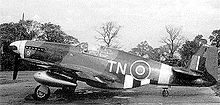RAF Coolham
During June and July 1942, Southern England was combed by Air Ministry surveyors attempting to identify suitable sites for the construction of Advanced Landing Grounds (ALGs).
The main purpose of the Southern England ALGs was, owing to their close proximity to Nazi-occupied Europe, to provide air support to allied forces prior to, during, and after an anticipated future liberation of the European mainland, which later manifested on 6 June 1944 as the Normandy Landings (Operation Neptune, AKA D-Day) and the Battle of Normandy (Operation Overlord).
On account of the Coolham site's level terrain and the area's excellent transport infrastructure connections via road and rail, specifically Billingshurst, Christ's Hospital, Southwater, and Horsham, it was considered to be an ideal location.
Original estimates were that 700–800 hedgerow trees would need to be cleared, and approximately 8,400 feet (2,600 m) of high-tension electrical cable would need to be laid and buried, along with wiring for telex and PBX telephone facilities.
5004 Squadron utilised a large arsenal of plant to carry out construction including (but not limited to) bulldozers, tractors, dump trucks, road rollers, a paint sprayer, and a concrete mixer.
Five Mile Ash, situated on the south side of Saucelands Lane, was demolished as it directly obstructed the southern end of the north-south runway.
[1] Sommerfeld tracking was a relatively light weight, inexpensive, quick, and easily assemblable method of reinforcing a ground bearing surface for use by heavy vehicles and high volumes of traffic, preventing the bearing surface from wearing away and becoming uneven, and preventing vehicles from sinking and becoming bogged down or stuck, and thus was ideal for constructing ALGs' runways which were only intended to be used temporarily, had to be built quickly, and would see heavy aeroplanes taking off and landing regularly.
[7] The following order of battle shows all units which were stationed at RAF Coolham at any point during its construction and its operational history (August 1943 – July 1944) as well as deconstruction efforts as the aerodrome was reverted back to agricultural land (September 1945 – October 1945):[8][9][10]

